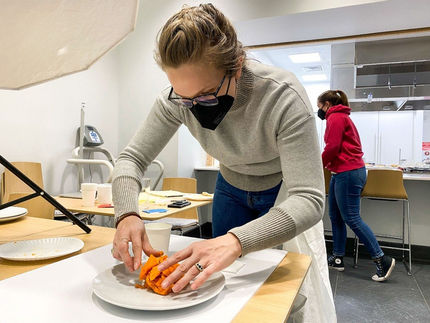The future of salty snacks in Southeast Asia
Advertisement
salty snacks became a source of ‘comfort food’ for many consumers during the pandemic. As a result, brands have innovated with new formats and flavours in the category over the past few years. From Oh So Healthy Osh Pops! Sour Cream Popped Corn Chips in the Philippines and Wise Cottage Fries Original Flavoured Crinkle Cut potato chips with Yakin Chilli Sauce Dip in Malaysia to Lay’s Wavy 2-in-1 Grilled Beef & Kimchi Flavoured Potato Snack in Vietnam, the variety and innovation in the sector continue to expand.

Computer generated picture
In Southeast Asia, data from Mintel GNPD shows that Malaysia led in terms of snack launches at 27% between May 2022 to April 2023. In comparison, Thailand saw a launch rate of 25% between May 2021 to April 2022, while the Philippines had the lowest snack launches over a five-year period from May 2019 to April 2023, all at below 10% each year.
Consumers’ preference for salty snacks hinges on various factors. They prefer snacks that are tasty, come from a trusted brand, offer nutritional benefits, consist of high-quality ingredients, and are conveniently portable. Interestingly, despite rising inflation and consequent food price hikes, consumers have shown no plans to cut down on snacking. Nine out of 10 Thai snackers actively look out for new flavours of salty snacks to try while 86% of Indians snack daily.
How economics will influence snack innovation over the next 2-5 years
While consumers currently remain committed to their snacking habits, brands need to prove their value during financially difficult times. Over the next two years, brands should seek innovative processing solutions and new ingredients to future-proof their supply chains. In five years and beyond, the focus might shift towards the development of emergency and space foods due to their long shelf lives and nutritional value. By this time, brands will seek digital solutions to help meet sustainability goals without forgoing efficiency in manufacturing.
Future-proofing supply chains
The events of 2022 highlighted the importance of future-proofing supply chains. Brands need to innovate and adapt to overcome potential ingredient shortages. One strategy is to explore new ingredients and production techniques or even use a blend of ingredients to meet consumer interest in healthier snack alternatives.
For instance, the Oh So Healthy! Mango + Sweet Potato + Banana Crisps is a mixture of real fruit puree and juice concentrate made into crispy crisps, which have longer shelf lives and nutrition that isn’t too far off from fresh produce.
Moreover, healthier production methods, such as baking and air frying, are gaining popularity. In China, 74% of consumers said air fryers provide a healthier way of cooking. Functional health claims appeal to health-conscious consumers, particularly in nuts, fruit snacks, and snack mix categories. Products like Air Nuts and Kettle Brand’s air fried range further underscore these trends.
Other ways in which brands can survive and sustain consumer interest in their products are including ingredients with specific functionalities, such as immune-boosters; driving appeal through different flavour inspirations and; coming up with different textures and colours.
In Brazil, 36% of snackers said an added crunchy texture would encourage them to choose an indulgent snack. flavour. In Canada, 71% of consumers are open to trying a new twist on their favourites.
Leveraging AI solutions
In the future, salty snack brands need to invest in technology and AI solutions. Companies can improve the product experience by combining the digital and the physical. Mintel research shows that 53% of Spanish Gen Z consumers used augmented reality (AR) to enhance the experience of consuming food/drink. With space travel now a reality for some, salty snacks, which have relatively long shelf lives, can be stored for extended periods before consumption. In fact, in Japan, some food products have received the “Japan Space Food” certification. Food meant for space can also be used in times of emergency, also because of their longer shelf lives.
But more than anything, taste remains a priority for consumers before other attributes such as nutritional benefits and longer shelf lives. Consumers have salty snacks because they taste good and satisfy their cravings.
What Mintel thinks:
The future of healthy snacks is in technology. Brands can leverage their products’ long shelf lives and convenient nutrition to help consumers prepare for unexpected events, such as disasters and food shortages. Consumers also want brands to offer experiences that combine digital and physical worlds, such as AR. Overall, continued innovation is the key to success and customer loyalty. Brands need to balance tech innovation with staying in tune with what their consumers want as far as salty snacks are concerned.

































































